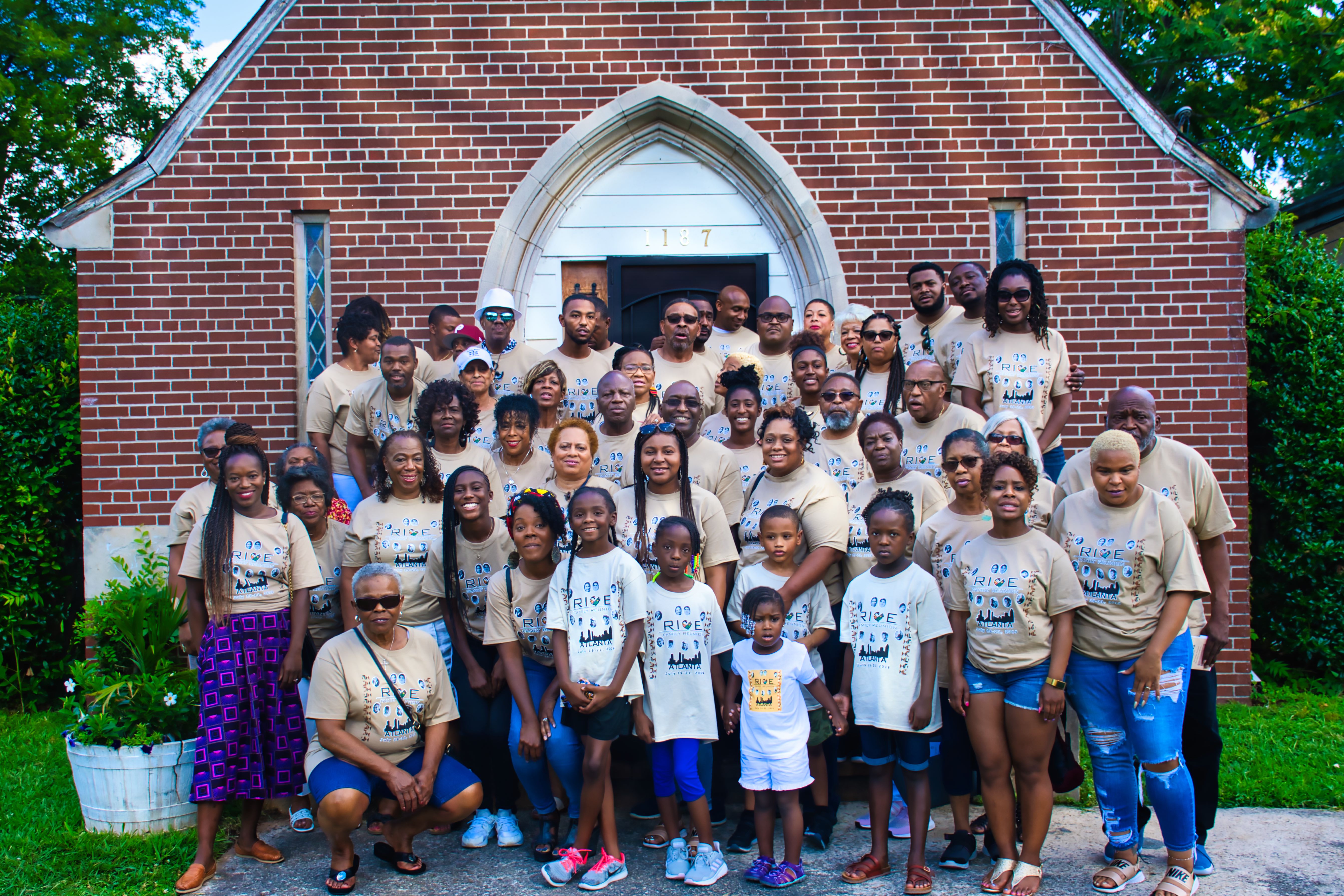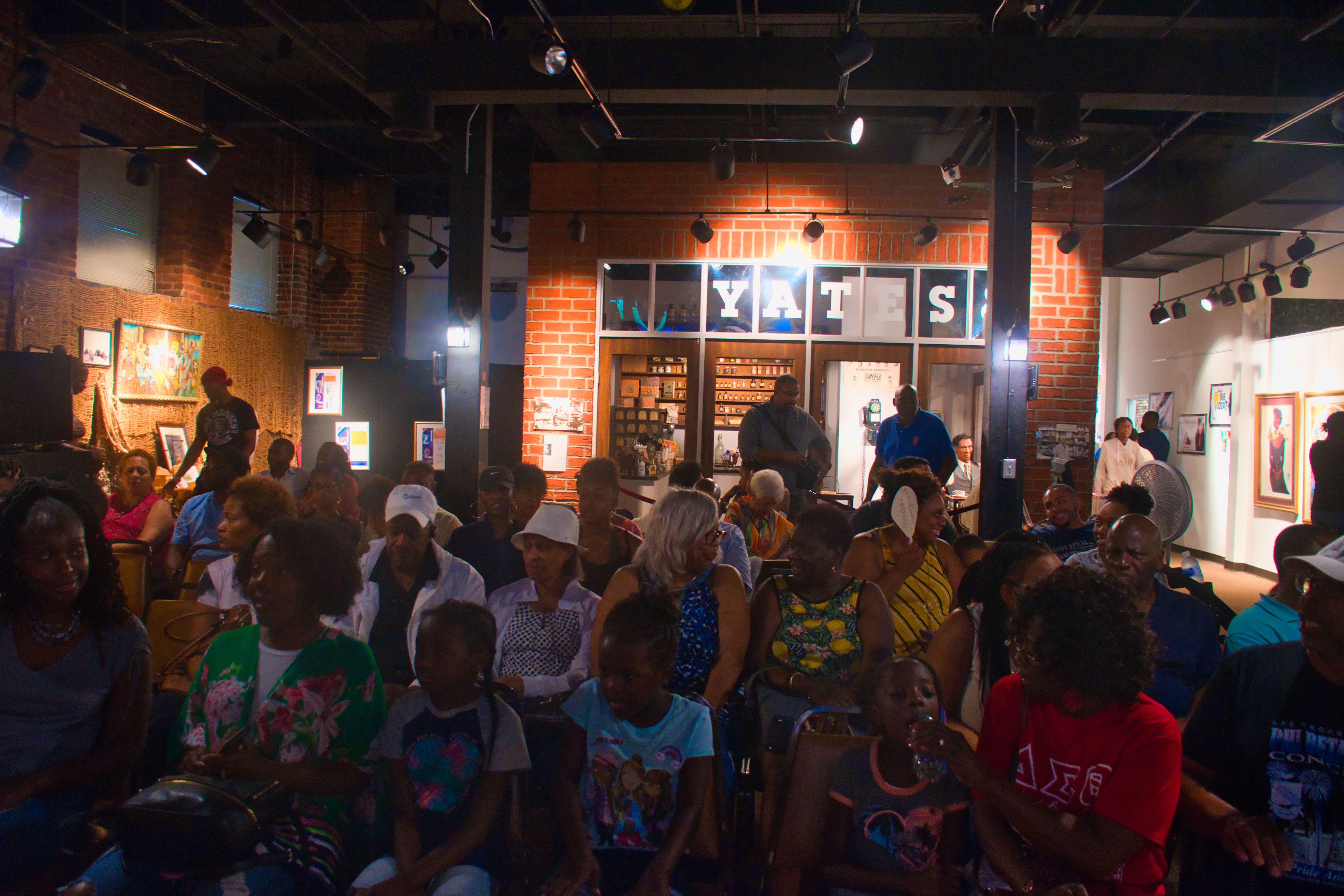Our Family

Rice Family Reunion
“And ye shall return every man unto his possession, and ye shall return every man unto his family.”
Leviticus 25:10
These are the Rice Family Roots
The blessed abolition of slavery gave freedom to the hearts, souls and minds of Blacks in the South. One black man, Nelson Rice, tall in stature was born on December 11, 1868, the first of three sons. His siblings were George and Jake. They were born to Billy Black and Ansatire Tamar, in Bamberg, South Carolina.
Ansatire was a midwife and respected matriarch. Her authentic greatness was achieved during the era as she occupied places in Bamberg. Many unresolved disputes that arose in her community and church were often brought to her attention for solutions and guidance. She possessed the ability of expressing views and opinions that became the accepted decision. Ansatire was known as “Big Grandma” by her grandchildren, because of her tallness and stately statue.
Sarah Jane Mitchell was born on October 6, 1871, to Jeremiah and Dido Nimmons-Mitchell. She was petite in stature and was the youngest of three daughters and five brothers. The children called Sarah Jane’s mother, Dido, “Little Grandma”, because she stood under 5 feet tall and was petite in statue.
Jeremiah and Dido owned their own home and farm in Bamberg County. Jeremiah served and fought in the colored Brigades during the Civil War. He died on Easter Sunday in April 1903. Dido died in June 1913. Before his death, Jeremiah willed his land acreage to the ownership of his children. It was common that children were willed 26-40 acres of land. This is the nature of the adage, “I gonna get my 40 acres and a mule.”
Nelson Rice and Sarah Jane Mitchell united in holy matrimony in January 1888. From this union, Nelson and Sarah gave birth to 15 children:
John Henry Rice (who died in infancy)
William Henry Rice (who died in infancy)
Essie Alberta Rice Rivers Nimmons (her first husband, Elvin Rivers died and she remarried Charlie Nimmons), “Sis”.
Nelson George Rice, “Brother”
Christine Tamar Rice Caine (who married Asbury Caine), “Tamar”
James Golden Rice (who served in WWI and died shortly thereafter), “Goldie”
Fletcher Moses Rice (who married Lumisher Broughton) “Big Man”
Sallie Jane Rice Reddish (whose first husband, William “Bishop” Reddish died and she remarried George Fells)
Regina Olivia Rice Crosby (who married Henry Crosby), “Jina”
Ollie Ethel Rice Washington Haddox (whose first husband, Luther Washington died; she remarried Jefferson Haddox), “Pet”
Wade Rice
Monnie Mitchell Rice (whose first wife, Rosalee Ransom died, and he remarried), “Mon”
Simmie Rice (who died before the age of 3 months)
Mamie Sue Catherine Rice Bonaparte Thomas (whose first husband, Michael Bonaparte died and she remarried James Thomas), “Baby”
Luther Rice (who died in infancy, was born subsequent to his father’s death)
Nelson was a sharecropper. However, after years of sharecropping on “The Old Rice Plantation”, Nelson acquired many acres of land in Bamberg County. On New Year’s Day 1905, along with their dog “Bull” and mule Daisy”, they moved into their newly owned property in the Orange Grove community of Bamberg, SC. The property was inherited by Sarah Jane Mitchell through her father, Jeremiah. Nelson and Sarah resided on the homestead in what contractors called an “L-shaped” house. Stories have been passed down about the Rice’s home. It was told that the house was always neatly kept and it had the best dressed yard, uniquely filled with beautiful sunflowers.
It is important to emphasize sharecropping from an American history perspective versus ownership from a family historical view. First, in the history of the tumultuous American South in the decades following the Civil War and Reconstruction, about four million freedmen (former slaves) were faced with making their way in an economy that remained dependent on farming. Sharecropping was the system of tenant farming which gradually emerged as the answer to the dilemmas of both freedmen and planters. Sharecropping initially appealed to freedmen because it promised benefits they had previously been denied, such as the right to work in families or groups of their choice, the freedom to work under their own supervision in their daily activities, and the potential that extra effort might eventually earn them enough profit that they could buy a small piece of land for themselves.
It is important to note that Nelson and Sarah were land owners and they were both descendants of land owners, located specifically in the Orange Grove community. In fact, black farmers owned all the land on the stretch of the road that leads through the Orange Grove community, which is about two miles, spanning from Highway 301 to the end of the road where the church, Orange Grove Methodist, still sets. Apart from black freedman ownership, sharecropped land was most often owned by white owners. Therefore, from a family historical point of view, it is important to note that proprietorship is a family value. Nelson knew the value of hard work and toiled diligently in his skills as a carpenter and farmer.
In fact, his talents in these vital vocations landed him the unique post-slavery position of managing a sprawling southern plantation, a job he held until an accidental fire sent the plantation to ruins. Additionally, Nelson’s management skills are why the inherited land flourished on which he and Sarah resided. Nelson continued to acquire surrounding parcels of land, thus continually increasing their assets.
Nelson also owned other property outside of the Orange Grove community. Consequently, he had the unique honor of being one of the earliest Black philanthropists by donating property to help found and establish a Bible College in his birthplace of Bamberg County, South Carolina.
In addition, Nelson, his mother, Ansatire, and sons were among the founders and builders of the Union Baptist Church and cemetery. It still stands on its original site in Bamberg, South Carolina. Sarah Jane was raised and baptized in the teachings of the Methodist discipleship and attended the Orange Grove Methodist Church. Shortly after her marriage to Nelson, she converted to the Baptist faith and attended the Union Baptist Church. Following Nelson’s death, Sarah Jane and her children frequently worshiped with the Orange Grove Methodist Church. Deriving from this Methodist-Baptist training, their offspring chose to continue their religious beliefs in these teachings.
Nelson Rice died Saturday, September 8, 1905, after a long history of severe headaches, believed to be caused by hypertension. So young, 36 years old, Nelson left much for us to learn: to own property and treasure the love of God and family. Indoctrinated in these family values, the children of Nelson and Sarah began to leave the Orange Grove family community. They migrated to different areas that were concentrated in the areas of Chicago, IL; Philadelphia, PA; and, York, PA. One sibling, Essie, remained in the South nearby the same initial family community.
A young widow, Sarah Jane later married Isaiah Handy, Sr., after all her children had married and left the homestead. There were no children of the Handy union. In an effort to maintain the acquired assets established by the Nelson and the Mitchell family, Handy mortgaged the land. Like sharecroppers, this was a common practice during this era. If a group of sharecroppers encountered a series of bad years--due to poor weather, for example, or infestations of crop-destroying insects--they could quickly find themselves buried in more debt than they could ever hope to repay. Unfortunately, Handy could not repay the debt and they lost all of the land to Mr. J. D. Copeland. In Bamberg County, many black property owners obtained loans from Mr. J. D. Copeland, a white man who thrived on lending black property owners money in exchange for farm land, equipment, and crops. Today, we called this old lending practice “title loans and pay-day lending.” To this day, serving as a historical marker of Nelson and Sarah’s humble beginnings, the land remains, with the sight of one tree and beautiful sunflowers growing wild that used to adorn the homestead.
After becoming severely ill, due to diabetes, Sarah Jane went to live in Chicago, Illinois, at the request of her two youngest daughters, Ollie and Mamie Sue. She died in Chicago on December 4, 1929. Her remains were returned to Bamberg and buried alongside Nelson in the Union Baptist Church Cemetery. Their burial site continues to stand today with tombstones depicting their earthly tenure. For historical references, it is important to note that the tombstone of Sarah Jane reads “Sallie Jane”’ which is one of the nicknames she was affectionately called. She was also frequently called “Sadie”.

